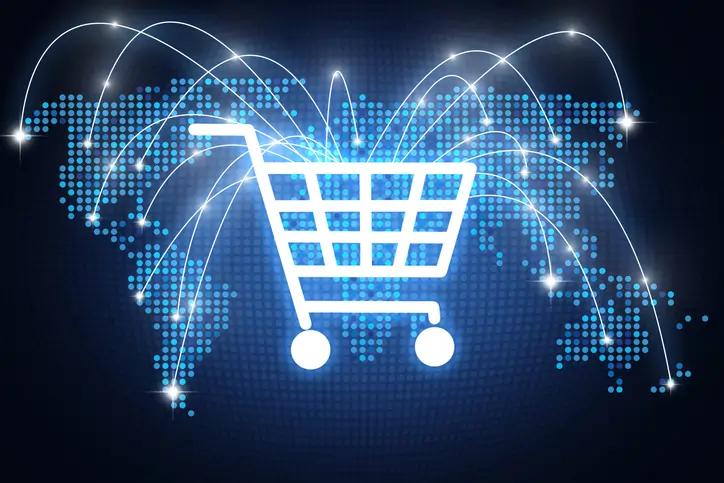Breaking Borders: Simple Strategies for Secure Global E-Commerce Expansion
Breaking Borders: Simple Strategies for Secure Global E-Commerce Expansion
Published by Wanda Rich
Posted on April 18, 2025

Published by Wanda Rich
Posted on April 18, 2025

Written by Vinod Sivagnanam
April 2025
Modern retailers of all sizes vie for the discretionary spending of consumers who now expect seamless access to products from anywhere in the world. For this reason, global e-commerce is the new marketplace standard in this hyper-connected, digitally-driven economy. As a result, acquiring new customers by unlocking new markets may be a faster and simpler path to growth than increasing order value with existing customers. This is especially true for e-commerce platforms that connect buyers with sellers who seek to gain scalable worldwide reach.
International sellers often face significant hurdles, including regulatory requirements, logistical bottlenecks, payment processing barriers, and increasing customer expectations around personalization, security, and delivery speed. These merchants frequently lack the resources necessary to gain a foothold in the global market and look to large e-commerce platforms to aid expansion. Today’s consumers demand access to global product catalogs at competitive prices and with expedited delivery options. Integrating these dual visions is the only viable solution to offering scalable, frictionless solutions that serve the needs of buyers and sellers. Yet, achieving successful results is a complex journey.
Evolving global consumer expectations
With borderless e-commerce, globalization has fundamentally changed how customers approach shopping. The spread and success of e-commerce platforms have created a world where consumers expect diverse product availability from global sellers, competitive pricing with transparent currency conversions and fees, and flexible payment options. This evolution places new demands on sellers, who must navigate the complexities of global transactions.
The digital buyer’s journey hinges on product availability and convenience at checkout, with transparent pricing and flexible payment options directly impacting purchasing decisions. Flexible payment solutions make it easier for consumers to process international transactions without financial hassle. Common strategies include fluid currency conversion, allowing customers to view and seamlessly pay in their local currency, and “buy now, pay later” (BNPL) services that enable customers to split payments over time without interest. Additional payment options include installment plans, co-branded credit cards, gift cards, global loyalty programs, and digital wallets.
Global synergy’s impact on e-commerce growth
The exponential growth of global e-commerce is the result of synergy among platforms, sellers, and customers. This mutually beneficial relationship has a cyclical effect that builds momentum, creating a rotation of improvement and growth: more customers attract more sellers, additional sellers bring a wider product selection, and a broader catalog draws more customers.
This momentum effect evolves as each group in the system contributes to the platform’s growth and stability. When customers have access to a wider selection of products, their engagement with the platform increases, incentivizing new sellers to enter the market to meet emerging demand. This increased competition among sellers often drives down prices, improves product quality, and encourages innovation. These factors give customers a broader range of products to draw them in, so the growth loop continues.
As platforms continue to evolve, they are able to reduce costs and streamline logistics. This allows them to pass those savings on to sellers and consumers, making cross-border transactions more affordable and efficient. According to a ResearchGate study across several industries, globalization leads to the adoption of e-commerce. It improves enterprise performance—a company’s ability to meet goals and efficiently utilize resources—and customer satisfaction when platforms align strategic business practices with cross-border opportunities. This synergy fuels continual growth and drives competition in the marketplace.
Global expansion: E-commerce platforms and overcoming barriers
Leading e-commerce platforms are pivotal in helping sellers gain immediate access to millions of potential customers worldwide, reducing the time and cost associated with market entry, advertising, sourcing, and distribution by providing a variety of solutions. Many platforms now offer working capital loans to eligible sellers based on historical sales performance. These loans are used to expand inventory, enhance marketing, or invest in borderless logistics. Sellers can also use advanced analytics and advertising tools to help target the right customer segments.
The fintech industry is crucial for streamlining borderless payments, another prevalent challenge when expanding business globally. Fintech solutions have emerged to help sellers reduce transaction costs, improve disbursement success rates, and manage foreign exchange fees in the background. According to FacilitaPay, fintech companies leverage backend partnerships with banks to lower transaction fees and ensure efficient international payouts. By using these services, sellers can focus on scaling their business without complex financial settlements and streamline operations.
When overcoming global expansion barriers, sellers face challenging international trade regulations, taxation laws, shipping costs, and customs compliance. Currency exchange fluctuations and cross-border fees further reduce profit margins. Additionally, it’s imperative for sellers to manage logistical challenges with inventory and delivery.
Building trust in global e-commerce transactions requires robust security measures. It is vital for sellers and platforms to address payment fraud and chargebacks, identity verification across jurisdictions, transparent return and refund policies, and consumer data protection. Maintaining secure, seamless experiences is critical to building long-term customer relationships in the modern landscape. Trade and financial regulations differ widely across countries, and sellers are required to navigate import/export restrictions, taxation policies, and anti-money laundering (AML) and Know Your Customer (KYC) rules. Geopolitical tensions may also result in trade restrictions, forcing sellers to adapt rapidly.
To capitalize on global opportunities, sellers and platforms can follow clear, strategic steps:
Understand regulatory and trade barriers.It’s important to have a dedicated individual or team to conduct in-depth research on target markets’ import/export policies, tax regulations, and financial compliance requirements.
Choose the right platform.Many businesses make the mistake of defaulting to the largest platform. Instead, evaluate platforms based on their geographic coverage, terms of service, logistical capabilities, and customer experience features.
Prioritize security and fraud prevention.Implementing a strong identity verification processes and anti-fraud measures reduces risks.
Optimize logistics.Organizations can use logistics solutions, often provided by e-commerce platforms, to manage shipping, delivery, and returns.
Leverage fintech solutions. By partnering with fintech providers that offer competitive foreign exchange rates and efficient payment options, cross-border payments can be streamlined.
The future of global e-commerce
Three key trends will reshape global e-commerce, the first of which is personalization. Hyper-personalized experiences, from localized landing pages to customized product recommendations, are now considered the norm. According to a recent Deloitte Digital report, 73 percent of consumers expect companies to understand their unique needs and preferences. It is imperative for platforms and sellers to leverage these technologies responsibly to deliver relevant, personalized content while maintaining responsible data governance.
Artificial intelligence(AI) and machine learning (ML) are redefining how sellers interact with global customers because ML models enable platforms to optimize supply chains, improve fraud detection, and enhance marketing effectiveness. Another key trend is alternative payment methods. Beyond traditional credit cards, consumers increasingly embrace digital wallets, BNPL options, and cryptocurrency. Sellers who adopt diverse payment methods gain access to previously untapped customer segments. Integrating these methods requires careful attention to regulatory compliance and risk assessments.
The rapid rise of global e-commerce presents broader opportunities for sellers, platforms, and consumers. Still, success requires strategic planning, technological adaptation, and a deep understanding of financial and regulatory frameworks while meeting rising consumer expectations for convenience, security, and personalization. E-commerce sales are rapidly climbing as consumer requirements for variety and competitive pricing evolve. According to Shopify’s global e-commerce sales growth report, these sales are forecast to grow to $6.56 trillion in 2025. Companies that proactively address challenges—while leveraging cutting-edge solutions—will be better positioned to thrive in the future global marketplace.
About the Author:
Vinod Sivagnanam is a senior product manager for a multinational software firm with over 10 years of experience in customer experience strategy and digital transformation in e-commerce and financial sectors. Vinod holds an MBA from Cornell University and a Master of Information Systems from the University of Arkansas. Connect with Vinod on LinkedIn.
Explore more articles in the Business category











